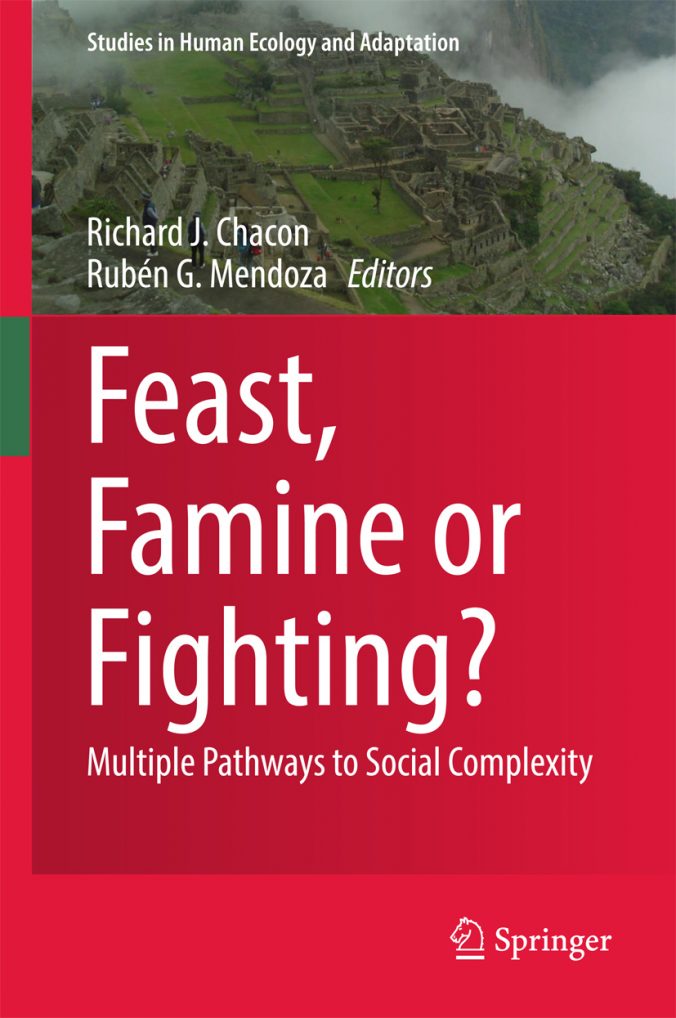The new year brings new books, and here is one we would like to point out, because, well, we have a contribution on Göbekli Tepe in there.

Richard Chacon and Ruben G. Mendoza (eds.), Feast, Famine or Fighting? Multiple Pathways to Social Complexity. Springer International Publishing: New York.
The book [external link], edited by Richard Chacon and Ruben G. Mendoza, contains contributions by anthropologists, archaeologists and sociologists on the question how social complexity developed in different regions of the world. Our topic is the start of social hierarchization during the early Neolithic, a subject the findings from Göbekli Tepe can significantly contribute to.
So, as a teaser, here is our abstract:
Oliver Dietrich, Jens Notroff, Klaus Schmidt
Feasting, Social Complexity and the Emergence of the Early Neolithic of Upper Mesopotamia: A View from Göbekli Tepe
Early Neolithic social complexity is a topic much discussed but still under-researched. The present contribution explores the possible role of feasting in the emergence of social complexity, hierarchical societies and the shift to the Neolithic way of life in Upper Mesopotamia. This region has long been placed at the periphery of the area relevant for crucial steps in Neolithization. With the hill sanctuary of Göbekli Tepe however it has produced a site that challenges this traditional assumption. There, large circle-like enclosures made up of often richly decorated T-shaped pillars of up to 5.5 m height have been erected during the Pre-Pottery Neolithic A (10th millennium BC), followed by smaller rectangular pillar-buildings throughout the early and middle Pre-Pottery Neolithic B (9th millennium BC). Vast evidence for feasting at the site seems to hint at work feasts to accomplish the common, religiously motivated task of constructing these enclosures.
Given the significant amount of time, labour and skilled craftsmanship invested, and as elements of Göbekli Tepe´s material culture can be found around it in a radius of roughly 200 km all over Upper Mesopotamia, it is likely that the site was the cultic centre of transegalitarian groups.
Access to and command of knowledge crucial to the society´s identity and well-being may have served as a social barrier hindering individuals to step outside of the given limits, while being the basis for power over the work-force of others for a restricted group of people. Social hierachization seems to emerge already in the PPN A of Upper Mesopotamia, earlier than hitherto thought, and maybe also earlier than in the Southern Levant, a region long thought to be the cradle of the new, Neolithic way of life.

Is that a bucranium top center on the porthole stone?
If you are referring to the image in the post about Enclosure B, yes, it is a bucranium.
Thanks. I’ve noted three. Do they seem to abound?
There are around ten on pillars and stone slabs.
Thank you. This is very instructive. It strikes me that the bucrania(?) may serve as emblems or insignia of a sort. In the photographs I don’t see other figures of such a character, where the part stands for the whole. For example, there are naturalistic depictions of bulls in addition to the bucrania. Am I on the wrong track here?
We have several more pictograms at GT, most notable are “H” and “C” shaped symbols. Their meaning is open to discussion.
It is interesting to note that naturalistic depictions of aurochs show the animals’ bodies from the side, while the head is shown in frontal view, similar to the bucrania. Obviously the head with the dangerous horns was of importance for the artists.
Oliver, that is a nice observation respecting the orientation of the head and horns of the naturalistically depicted aurochs. This is a bit early for bull-leaping, so I hope the artists didn’t too often encounter one head-on. It does seem clear, though, that the frontal aspect is an object of fascination. I am grateful for your prompt and apt responses. Keep up the good work. Tom
Unfortunately for them these encounters seem to have been very frequent indeed. Aurochs comes second in the hunted fauna at Göbekli after gazelle.
Hearty fellows. Beef fed. Now I see your point about being galvanized by the face-on view.
Going back to pictographs: Jens in his 6/10/16, “Temples”, post suggests that the symbols at the neck of the apparent garments on the central pillars of Enclosure D might have served to identify the figures to Neolithic viewers. On one is a bucranium. On the other there appears to be an H and something like an S just below it. Is that correct?
A circle and a lying ‘C’.
Thanks for clearing that up for me.
Sorry I’m so slow to come to this: possible full and crescent moon?
That is definitely a possibility. However there is a clear danger of misinterpretation. These shapes may have that meaning in our cultural background, they could have meant something completely different in the Neolithic.
Agreed. Are there similarly obvious surmises about the H that goes above these figures? Some dubiety attaches to Orion as a candidate in light the findings of Andrew Collins (Andrew Collins.com).